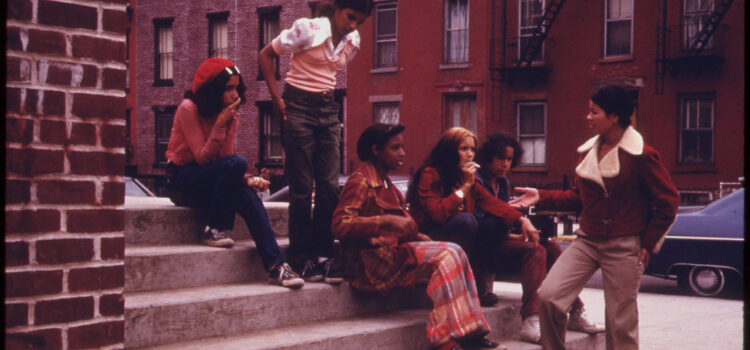

This article is an excerpt from the Shortform book guide to "The Color of Law" by Richard Rothstein. Shortform has the world's best summaries and analyses of books you should be reading.
Like this article? Sign up for a free trial here .
What are the causes of residential segregation? What are the effects of residential segregation?
Discriminatory public housing policy, housing unaffordability, and the failures of government agencies are the primary causes of residential segregation. Residential segregation has led to isolated black neighborhoods that have lower housing quality, high rates of poverty, and less access to good education.
Read on to learn more about the causes of residential segregation.
The 4 Primary Causes of Residential Segregation
Racial residential segregation is an enduring problem for three reasons in particular:
1) Housing Unaffordability
The Federal Housing Act, passed in 1968, enshrines in law African Americans’ freedom to live wherever they can afford to. But historical discrimination in labor and housing markets has created intergenerational wealth and income disadvantages for African Americans that prevent them from living in middle- and upper-class—that is, predominantly white—areas.
Making matters worse, the value of homes in predominantly white neighborhoods has appreciated considerably in the last 50 or so years while the values in African American neighborhoods haven’t. This development has a dual effect: It makes homes in white neighborhoods even more unattainable for African Americans and it entrenches the intergenerational wealth gap between Blacks and whites (because the homes white parents pass on to their heirs have appreciated significantly while those that Black families pass on haven’t).
Homes in and around the famous Levittown subdivision provide a stark example of these effects. In 1948, a one-bedroom in whites-only Levittown went for about $75,000 in today’s dollars. Today, that home—even without major remodels or updates—sells for about $350,000. A one-bedroom in nearby Lakeview, NY, a predominantly African American town, also went for $75,000 in 1948. Today, the Lakeview home is only worth $90,000–$120,000.
2) Unintended Consequences of Race-Blind Policy
Although many policies passed in the 20th century had no explicitly discriminatory purpose, the fact that segregation was already entrenched meant that these race-neutral policies exacerbated housing inequality. The most salient example is the mortgage interest deduction, the tax break given to homeowners. Because homeownership for many African Americans was unattainable—due to the de jure policies of the FHA and other agencies, among other bodies—they were largely excluded from this government subsidy.
3) Flawed Social Programs
Federal and local governments have enacted programs to help low-income families secure affordable housing. Unfortunately, these programs tend to redouble segregation rather than remedy it.
For example, the Housing Choice Voucher program (also known as “Section 8”), which provides families with financial support to rent apartments they couldn’t otherwise afford, offers amounts too meager for families to escape low-income areas. Landlords in better-off areas also frequently refuse to accept housing vouchers as payment.
4) The Failures of the IRS and Other Government Agencies
Many other federal agencies besides the FHA contributed to racial residential segregation. The IRS, the FDIC, and the Federal Reserve all, in one way or another, exacerbated it.
One of the central responsibilities of the IRS is determining the tax-exempt status of various US entities. Although its rules require the agency to withhold tax exemptions from organizations that countermand official public policy or promote prejudice and discrimination, the IRS regularly conferred tax-exempt status on entities that contributed to racial residential segregation. For example, tax-exempt religious entities like churches and synagogues regularly promoted segregationist policies like racial restrictive covenants.
Tax-exempt colleges, too, promoted segregation. The University of Chicago subsidized local property owners so that they could keep Hyde Park and its surrounds segregated. From 1933 to 1947, the University covered $100,000 in legal fees for the defense of restrictive covenants and the eviction of recently arrived African Americans.
Potential Remedies
Given the complexity of the causes of residential segregation enumerated above, Rothstein is loath to offer remedies to racial residential segregation for fear they will inevitably come up short. Nevertheless, he proposes some initial steps that may, in time, lead to a more integrated, and thus more equitable, society.
Acknowledging De Jure Segregation
Americans must realize that racial residential segregation isn’t the result of personal choices or housing and labor market cycles. Rather, it is the legacy of explicitly discriminatory public policy that flouted the US Constitution and US laws. Acknowledging this fact as one of the primary causes of residential segregation opens the door for government to enact bold changes to rectify past injustices.
Financing Integration Directly
One of those bold reforms could be to subsidize African Americans to purchase homes in predominantly white neighborhoods. For example, the government could purchase homes at market rates in areas segregated by FHA policy and sell them to African Americans at historically pegged prices. Another strategy would be to subsidize low- and middle-class Black families directly to allow them to move to and integrate into predominantly white neighborhoods.
Banning Exclusionary Zoning and Implementing Inclusionary Zoning
Zoning ordinances prohibiting multi-family homes and requiring large lots are still on the books in many localities, effectively excluding lower- and lower-middle-income buyers—many of whom are African American—from living there. A blunt instrument is simply to ban these zoning laws (which were often racially motivated in the first place).
Another possibility is to withhold the mortgage interest deduction from homeowners in discriminatorily zoned areas or areas that aren’t taking steps to accommodate low- and middle-income families. The affected families would then put pressure on officials to promote integration.
In addition to mitigating the effects of exclusionary zoning laws, states and municipalities can enact inclusionary zoning laws. These laws actively promote the construction of affordable housing and the attraction of low- and middle-income families to mostly white areas.
Reforming Section 8
With the right reforms, the Housing Choice Voucher program could be a powerful tool for integration. One key reform would be to increase voucher amounts. Another would be to increase Section 8’s overall funding to ensure all people who qualify for a voucher get one. The program’s funding is currently limited and applicants are often denied vouchers due to the program’s running out of money. (In 2015, six million qualified people went without vouchers.)

———End of Preview———
Like what you just read? Read the rest of the world's best book summary and analysis of Richard Rothstein's "The Color of Law" at Shortform .
Here's what you'll find in our full The Color of Law summary :
- How racial residential segregation is the result of explicit government policy
- The three reasons why racial segregation is so difficult to reverse
- The steps that could lead to a more integrated and equitable society






